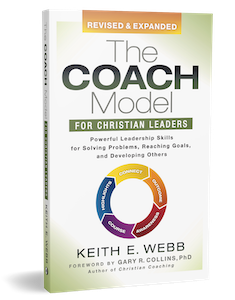Jesus demonstrated a brilliant strategy for drawing out people's thoughts and feelings through a simple but powerful questioning sequence. We can see it in this example from Luke 9:18-20:
"Once when Jesus was praying in private and his disciples were with him, he asked them, 'Who do the crowds say I am?' They replied, 'Some say John the Baptist; others say Elijah; and still others, that one of the prophets of long ago has come back to life.' 'But what about you?' he asked. 'Who do you say I am?' Peter answered, 'God's Messiah.'"
Jesus has a two-step approach: he warms them up with a safe question about others before inviting them to a more personal response.
Step 1: The Safe Warm-Up Question
"Who do the crowds say I am?" This question creates emotional safety. When we discuss what other people think, we don't risk exposing our own thoughts or committing to a position. It's a psychological shelter—we can explore ideas with less personal risk.
Clients often refer to "other people" without realizing it. (Did you notice? I just demonstrated it myself by writing "clients often do this" rather than "I often do this." We naturally hide behind the comfort of discussing others.)
Step 2: The Open-Up Question
After the warm-up, people feel safer sharing their true thoughts. "But what about you? Who do you say I am?" Jesus gently but directly invites personal disclosure.
I use Jesus' question sequence in two ways:
- I start with an "other people" warm-up question like "What does the team think about this goal?" Then transition to a personal question, "What about you? How do you feel about it?"
- When I ask a personal "you" question but receive an "other people" response, I gently ask again, "I hear what others think—but what about you? What's your take?"
How might you use Jesus' question sequence to encourage deeper, more authentic conversations? Whether you're coaching or simply trying to connect more meaningfully with those around you, follow Jesus' example to open hearts and minds.
Grace & Peace,
Keith

 If you're a Christian leader and want to multiply your impact, we can help. I developed The COACH Model® and our ICF-approved Christian coaching training to help you achieve organizational results while simultaneously developing people.
If you're a Christian leader and want to multiply your impact, we can help. I developed The COACH Model® and our ICF-approved Christian coaching training to help you achieve organizational results while simultaneously developing people.